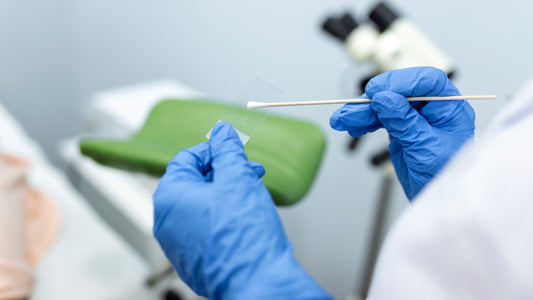Building muscle is one of the most important things you can do as you age. It helps improve every single health marker you can think of and it makes you look better in your clothes. To top it off, resistance training is pretty simple to do.
In this article, I’m exploring:
- The many ways muscle can help improve your health
- The most common objection I get when talking about strength training
- How to build muscle, even if you’re in perimenopause or menopause
- How maca root can help you build muscle and reach your fitness goals faster
5 Ways Muscle Is Critical For Your Health
I’ll say it again: building muscle is one of the most important things you can do as you age.
So why exactly do you want to add more muscle to your body?
There are a whole host of reasons, including:
- Insulin sensitivity: muscles help you improve your insulin sensitivity, which helps with weight loss, improves your mood, increases energy, and helps prevent diabetes. (1)
- Fat loss: when you increase muscle, you shift your body composition and lower your body fat percentage. And it’s not just about looking good, either. Because fat cells can actually produce estrogen, this helps with the estrogen dominance we see so often during perimenopause and menopause. (2,3)
- Overall strength: strong muscles help maintain strong bones and joints. Plus, muscles help you maintain your balance and flexibility — two key markers of longevity. Muscle mass also helps to prevent injuries and falls, which often lead to painful broken bones and long-term difficulties later in life. (4)
- Brain power: exercise helps to boost cognitive function and brain-derived neurotrophic factor (BDNF) which is a protein that’s important for memory and learning. (5,6)
- Heart health: that’s right, resistance training helps with your blood pressure, cholesterol, and blood sugar, all of which are factors in heart disease. (7-11)
Don’t Worry About Getting Too Muscle-y!
I can hear what you’re thinking right now.
“I don’t want to get too bulky!” This is one of the most common concerns women have when it comes to adding resistance training to their workout regimen.
But I can promise you this — unless you try exceedingly hard, you won’t get “too muscle-y.”
The bodybuilders you see that have a lot of muscle and a very low body fat percentage have to follow a very strict training and diet regimen to produce the kind of results you’re afraid to get.
I promise, most women who incorporate strength training into their lives experience only the benefits I’ve outlined above. And they look leaner and fitter and curvier, not bulky.
How To Build Muscle In Menopause
So now that we’ve discussed why you want to build muscle and allayed your fears about bulking up, let’s talk about how to build muscle in menopause.
- First, you’ll need to incorporate resistance training into your workout routine. That can look like bodyweight exercises (think pushups or yoga). Or you could consider weight training, where you lift weights repeatedly to target specific muscle groups.
It’s important to note here that you absolutely do not have to join a fancy gym to build muscle — unless you want to! You can always do bodyweight exercises anywhere, any time. And if you choose to go the weight training route, a used pair of dumbbells in your garage builds muscle just as effectively as a machine at the gym.
2. The next step is to get adequate protein into your diet. The great news is that plant-based proteins can give you all the protein you need. They are just as effective as meat at providing you with the protein required to build and maintain muscle. (1)
3. Plenty of rest and recovery time. Sleep is crucial for building muscles and having the energy to perform your workouts.
If you can do these three things consistently, you can build muscle in menopause and beyond. For some women, consistency looks like a few weight training exercises per day, and for others, it looks like a 60-90 minute full-blown session four times a week.
Just be sure that if you decide to lift heavy weights you only target one muscle group at a time and then allow those muscles to recover before working them again.
Does Maca Root Help Build Muscle?
Here’s the challenging thing about building muscle in menopause. Estrogen does play a role in the maintenance of your muscle mass and strength. So when your estrogen levels start to decline, you need to give your body every advantage you possibly can to make building muscle mass easier.
That’s where maca root comes in.
Maca is one of the most powerful natural foods on the planet — especially for women in menopause.
It can help you:
- Increase energy levels
- Support your mental health
- Put hot flashes in their place
- Sleep blissfully through the night
And it could also help you support, build, and protect your muscle mass.
While we don’t have robust human trials showcasing maca’s direct effect on muscle building, when scientists added maca to a muscle cell culture and let it sit for a couple of days, they noticed the muscle diameter increased. As a result of their observations, they concluded that maca may promote muscle growth. (2,3)
What’s more, maca has a strong amino acid profile — with a host of minerals and nutrients to its credit as well. (4) That means it can help you get enough protein to build muscle effectively, and provides you with nutrients that support muscle function and maintenance, too.
Maca For Curves?
If you’ve heard about women taking maca to try to change their body composition or create “curves” — that’s because maca, when paired with resistance training makes your body look amazing!
When you pair its nutritional profile with its ability to boost energy, maca is the ideal companion for women who lift. I pair it with my Keto-Green® Protein shake and a Keto-Green® diet for spectacular results. Thousands of women from all over the world have changed their bodies and extended their health-span with this combination, too.
Check out my Keto-Green® 16 Deluxe Kit for everything you need to get the body of your dreams!
Is Maca Good For Energy?
Maca’s real superpower is helping your energy levels explode. And that’s one of the amazing ways it can help you build and maintain muscle, boost performance, and recover from workouts faster.
Studies indicate just a few grams of maca a day could improve energy levels — and mood. (5,6) These are both critical factors for getting in a good workout and building muscle.
How Often To Take Maca Root
In Peru, people eat maca for everything, every day. When I was there, it seemed like maca was offered as a solution for just about any and every ailment you can think of.
Maca is considered to be well-tolerated and most women have the best results when they take it daily. (7)
The Ultimate Weight Loss + Muscle Building Solution
We’ve been through why you should really focus on building muscle mass. And we’ve talked about how to do it.
We’ve also touched on maca’s role in helping you increase your energy levels and get the best possible results from your workout.
Now, it’s time for you to meet my ultimate weight loss and muscle-building bundle, the Keto-Green® 16 Deluxe Kit.
This kit includes everything you need to change your body composition — and fight menopause symptoms like hot flashes while you’re doing it.
The Keto-Green® 16 Deluxe Kit combines the power of maca, plant protein, and test strips to help you achieve ketosis and alkalinity, two of the most important components of weight loss in menopause.
Check out the Keto-Green® 16 Deluxe Kit here.
References
- https://www.ncbi.nlm.nih.gov/pmc/articles/PMC6339182/
- https://pubmed.ncbi.nlm.nih.gov/32804997/
- https://pubmed.ncbi.nlm.nih.gov/32804997/
- https://www.ncbi.nlm.nih.gov/pmc/articles/PMC6279907/
- https://pubmed.ncbi.nlm.nih.gov/28659812/
- https://pubmed.ncbi.nlm.nih.gov/30838520/
- https://www.ncbi.nlm.nih.gov/pmc/articles/PMC6563593/
- https://pubmed.ncbi.nlm.nih.gov/27680663/
- https://pubmed.ncbi.nlm.nih.gov/28769100/
- https://pubmed.ncbi.nlm.nih.gov/31023184/
- https://www.ncbi.nlm.nih.gov/pmc/articles/PMC6563593/
- https://www.ncbi.nlm.nih.gov/pmc/articles/PMC8230006/
- https://www.ncbi.nlm.nih.gov/pmc/articles/PMC9224786/
- https://www.ncbi.nlm.nih.gov/pmc/articles/PMC10536268/
- https://www.ncbi.nlm.nih.gov/pmc/articles/PMC3184420
- https://pubmed.ncbi.nlm.nih.gov/27548190/
- https://pubmed.ncbi.nlm.nih.gov/19781622/
- https://www.ncbi.nlm.nih.gov/pmc/articles/PMC5039502/



